Independent Project
Concept
My intention was to create five images that represents division by using the still life technique. I wanted to use everyday objects to make it simple and unique. I used my own environment, so I could control my own setting and lighting. I took the photos while at home, during one production day. I wanted to capture something simple that would create discussion between the photographs and the audience. I want the audience to get inspired by the photographs.
“Backlighting requires careful judgement of exposure to avoid turning subjects into complete silhouettes, unless that is your intention.”
(Hedgecoe, 1998, 146).
I wanted to focus on backlighting, so it would capture shadows and expose the images. I also tried to make the objects sharp, so it focuses on the objects.
Influences
Before taking the photographs, I researched for ideas and influences.
Jan Groover inspired my photographs by creating shadows in still life objects that are used in everyday life. I thought I would use this technique in my final image. I like the photographs as it has used simple items and created reflections through the use of lighting. I like the use of black and white in the first image. The objects are in sharp focus.
Josef Sudek is another influence into my final project. The images are quite dark. I like the use of the lighting, as it created shadows and reflections in the glass cups. The objects are sharp, as it is fully in focus, giving it more definition in the images. The second example could be used to represent the term ‘division’ as you can clearly see different angles of the egg, reflecting through the glass. I thought this is very inspiring.
Alternatives
Reflection
For my first image, I would attempt to add more lighting if I was to do the project again. However, due to time restraints, I only could use general lighting. I would also probably try use a mixture of techniques such as a portrait to show a character wearing the hearing aid, and another wearing the reading glasses. The intention for the first image was to create a generalised issue to life with the image, to show the division of the representation of a hearing aid and reading glasses. I decided to use still life objects rather than portraits or landscape photographs because using still life images allowed me to take the time to create a story and not use characters or specific locations. With the time restrictions, I wasn’t able to present my first idea to do a portrait. I could not find anyone who wears an hearing aid. Therefore, I decided to switch to still life, so I can use my own hearing aid and control the settings.
As for the locations, I used my living room. I set up a table facing the cream wall. I used the Canon 700D with the 18-55mm camera lens. I used natural lighting through the window, ceiling lights and lamps. I tried to avoid using the flash feature on the camera. This is so I will not over expose the objects.
“Still-life pictures are studied arrangements of inanimate objects that give the photographer the luxury of time and complete control. Such pictures may be assembled with patient care, or chanced upon.”
(Hedgecoe, 1998, 146).
This statement supports the creation of my image, as I used my own arrangement of the objects and took the time to get the framing and settings correct. I took my time by being patient, taking different photographs to support my final image. I spent a full day on the production of the photographs to ensure I get the quality images I want. As I was in my own environment, I was able to control the way my still life photographs look.
I decided to use my first final image as the idea is unique and simple. I did not want to complicate the final project due to time restraints and for myself being new to photography. The idea came from looking for inspiration around my home.
As for my second image, it is one of my strongest selection of shots I took. This is because it is sharp at the front of the object, but it starts going out of focus at the back. I thought this was cleverly made. I like the use of shadows on the floor which gives the image more definition. To improve, I would focus the whole image and possibly change the whole concept as I believe this is the weakest final image of them all. I have used a shallow depth of field to blur the background out of focus. I used this as a different technique to get a variety of different styles for my final project. The inspiration for the photograph came from online searching for photography equipment. I wanted to create a simple idea that shows the audience division in different camera lenses.
In addition, for my third final image, I took the photographs using the same cream background. As the images were not in focus, I decided to change the background. The final photograph is the strongest one out of all as the camera lens are in sharpness of the object but used shallow depth of field to blur out the background. To improve this image, I would use a different background. This could be anything relating to cameras and photography. I hope for the audience to capture the idea of division of the different types of camera lenses you can use.
As for my fourth image, I tried to create something different. I used two cubes that has numbers painted on. I found these objects in my family’s house. This shows the division in different numbers. The objects are in focus. I used light from my phone as extra lighting to create a shadow effect to give the objects more definition. I repeated the process of taking the photograph while positioning the objects as I wanted to use the frame well. To improve this image, I would create more of a background. I felt like I could have used the space more, to represent the term more clearly.
“The object is no longer understood as being wholly separate from the subject, but retains an equivalent status and integrity.”
(Kember, 1998, 35).
This statement presents the argument that objects are separated from the overall presentation of the content, but it relates somehow.
For my final image, I used two chairs facing opposite each other to represent division of height and the location of the chairs, facing opposite of each other. This creates a story of opposition which the audience can relate to. It also creates a secondary story of height difference. I created this as it can tell a story with the audience’s imagination. I set up the ISO, Aperture and Shutter Speed using a 28-90mm lens. The objects are focused and used natural light and ceiling lights. This was due to not having access to professional lights in a studio. The lighting helped create shadows which brings the photograph to life, creating more of a natural look. If I were to do this photograph idea again, I would add more lighting through lamps or by using lighting equipment. This would give the image more definition and for it to stand out a bit more.
In comparison to the final images, the alternative photographs have not been selected for a number of reasons. These are due to poor positioning of the objects, lack of sharpness in the objects and poor lighting.
Reference List
Hedgecoe, J (1998) The Art of Colour Photography. London: Reed Consumer Books Limited.
Kember, S (1998) Virtual Anxiety: Photography, New Technologies and Subjectivity. Manchester: Manchester University Press.

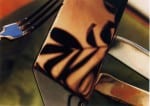
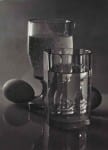
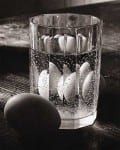
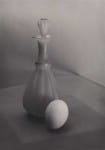
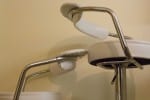
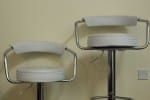
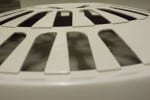
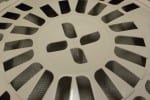
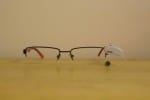
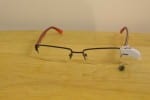
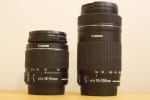
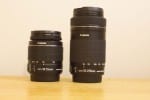
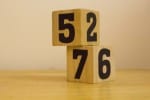
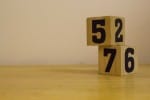
Leave a comment